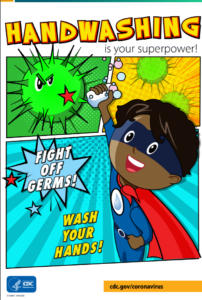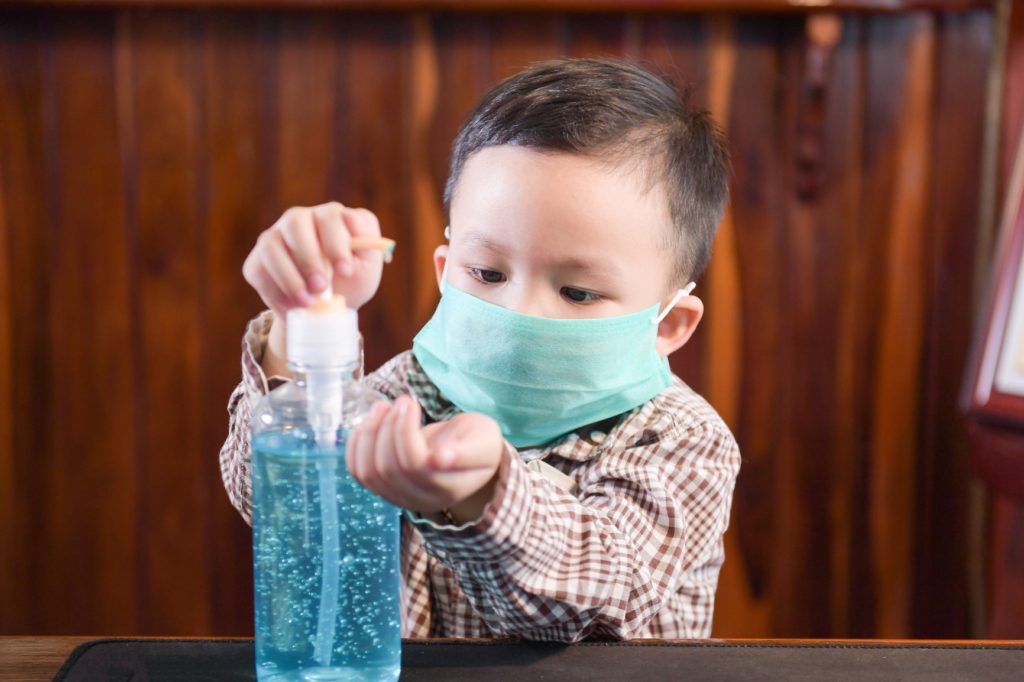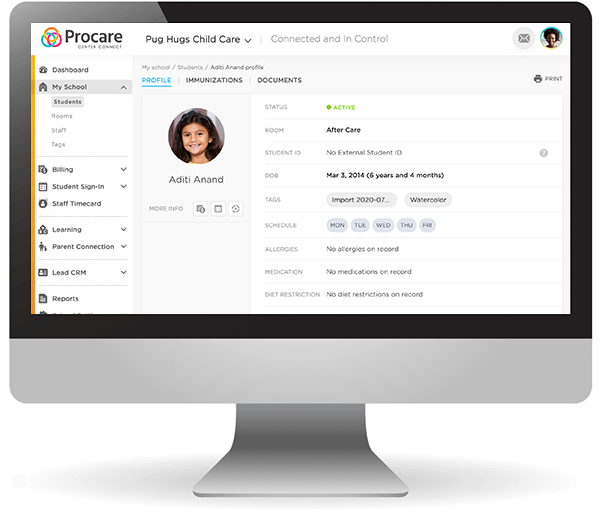
Thousands of children across the country depend on after school or out-of-school time (OST) programs to provide them with hands-on learning experiences, stress-free creative time, exposure to new activities, help with school-assigned homework and academic enrichment opportunities.
As schools begin to reopen their doors to students, after school and OST programs must also prepare to meet the educational and programming needs of kids while maintaining a safe environment and following best practices to reduce the risk of COVID-19 transmission. That means implementing new protocols and policies to reduce the spread of the coronavirus and developing specific plans for managing coronavirus concerns at your facility.
To help you get started, we’ve put together this guide on how to prepare your program for reopening. We’ll highlight the most important steps you can take when reopening your program and point you to the most reliable resources where you can find additional tips and guidance.
The Crucial Role of Before and After School Programs
Before and after school programs provide significant benefits to children, families and their communities. Kids find opportunities to make friends, improve their social skills, access academic support and have fun learning in a low-stress environment.
Studies have shown that attending after school programs can improve a child’s math, reading and classroom behavior – as well as confidence and self-esteem. OST programs that incorporate physical activity and health education have also been associated with positive health outcomes.
During the coronavirus pandemic, millions of children have experienced social isolation, missed out on recreation opportunities and struggled to keep pace academically. To help our kids bounce back from this experience and succeed in the future, communities will depend on after school and OST programs to provide a safe environment with academic supports and opportunities for recreation and social development.
Let’s find the best solution for you.
Request a demo and connect with the most experienced solutions team in the child care business. We’ll help you find the right solution for your center.
How to Prepare Your After School Program for Reopening
As our communities reopen, kids will depend on after school programs to help them succeed academically and socially in the coming year. Reopening your after school or OST program means that you’ll be there to provide those critical supports while doing your due diligence to prevent the spread of COVID-19 at your facility.
This guide highlights the most important action items you’ll need to address on your way to reopening. We also include links to trustworthy resources where you’ll find additional information on how to prepare your program for reopening.
Review the CDC Guidance for Schools
As you prepare to reopen your after school or OST program, you should be familiar with the latest coronavirus facts and guidance published by the Centers for Disease Control and Prevention (CDC). While the CDC has not published guidance that is aimed specifically at after school programs, it has published extensive guidance on how best to limit the spread of coronavirus in school and child care settings.
After school and OST programs can be successful by adopting many of the same guidelines, and should explore partnering with local school districts and community organizations where possible to open lines of communication and share best practices and other information.
In addition to the most up-to-date information on COVID-19, you’ll find resources like printable posters and graphics for your program, FAQs about reopening, and fact sheets you can share with program and community members.
Resources:
- CDC Coronavirus Resource Page
- CDC The Importance of Reopening America’s Schools this Fall
- CDC Preparing K-12 School Administrators for a Safe Return to School in Fall 2020
- CDC Guidance for Child Care Programs that Remain Open

Review Guidance from State Public Health Departments
In addition to the information published by the CDC, many states have released their own official guidance for reopening after school programs during coronavirus.
Program administrators should check with their local and state public health departments for any available guidance related to reopening during COVID-19. The Afterschool Alliance has published a list of guidance reopening guidance documents by state (link below).
Resources:
Adopt New Protocols for Infection Prevention

Infection prevention is the most important new consideration for after school and OST programs reopening during coronavirus. Program administrators must implement new policies and procedures, in alignment with state and CDC guidelines, to reduce the spread of COVID-19 in their facilities. The most important protocols are:
- Daily Health Screenings – Kids arriving at the program should be given a basic health screening before they are permitted entry. A health screening includes a verbal component – asking if the child feels unwell or has had any symptoms of COVID-19 – and a temperature check. Kids with a fever of over 100.4 degrees should not be permitted to enter the program.
- Routine Cleaning & Disinfection – Implement a new cleaning schedule to ensure that desks, door handles and other high-touch surfaces are disinfected on a regular basis.
- Face Coverings – Require all staff members to wear cloth face coverings while providing care at your program. The CDC has provided extensive guidance on the appropriate use of masks to reduce the spread of COVID-19.
- Hand Hygiene – Healthy hand hygiene behaviors must become a routine for all children, staff and administrators. Handwashing should take place upon arrival, after staff breaks, before and after preparing meals, before and after eating, after playing outdoors and after cleaning. Wash hands with soap and warm water for at least 20 seconds.
- Physical Distancing – Physical distancing is one of the most effective strategies for limiting the spread of coronavirus. While we do want to encourage kids to socialize and engage with their peers, after school programs must implement the appropriate measures to balance this desire with the need for community safety.
Keep children in smaller groups with the same care provider each day – there should be no mixing between groups, and no large group activities. Program administrators can reconfigure the program space to maximize physical distancing between students and modify the curriculum where required to avoid activities that require close physical contact.
After school and OST programs can also take steps to prevent any outside visitors or volunteers from entering the program space.
Resources:
Update Child & Family Information
As you reopen during COVID-19, it has never been more important to have accurate information about every child and family that participates in your program. In the event of an infection or outbreak, having up-to-date documentation is critical for ensuring child safety and contacting parents in case of an emergency.
For each child in your program, we recommend you record the following information:
- Names of parents or legal guardians
- Updated contact information for parents and legal guardians
- A list of individuals who are authorized to pick up or drop off the child from your program
- An updated record of immunizations the child has received
- A medication form detailing any medications the child is required to take
Develop a Communications Plan
After school and OST programs preparing to reopen during COVID-19 should develop an emergency communications plan that details how they will communicate with families, staff members, the community and local health officials if a case of coronavirus is detected at the facility.
An effective communications plan may require the use of translators to ensure communications are accessible for families from all cultural and linguistic backgrounds. Emergency communications must also be accessible for individuals with disabilities.
Your communications plan should create avenues where parents and staff members can self-report symptoms of COVID-19 in themselves or in their kids.
Connect with Local Health Officials
After school and OST programs need to establish a point of contact within the local or state public health services to ensure rapid notification of any detected cases and timely contact tracing to limit the spread of infection.
Communicate with Staff Members

Program staff are on the front lines when it comes to supporting kids who attend their programs, and they’re expected to model and enforce infection prevention strategies that keep everyone safe. Communication between program administrators and staff members is essential to ensure a successful reopening:
- Address Staffing Concerns – Some state public health departments recommend that adults in identified at-risk groups for COVID-19 should not return to work in child care settings this fall. Staff members over 65 years of age or with underlying health conditions should be encouraged to consult their healthcare provider to assess their risk. Staff absenteeism may be caused by coronavirus infection or related symptoms which require a quarantine period. Be prepared to fill staffing gaps as their programs reopen.
- Communicate Policies and Procedures – Program administrators must clearly communicate with staff members about new policies and procedures that will be implemented as part of the reopening. This includes infection prevention procedures like handwashing and cleaning schedules, curriculum changes to support physical distancing, and daily health screening procedures. Staff members must be encouraged to self-report when they are feeling sick and to avoid coming into work and putting others at risk.
- Provide Training – Meet with staff members to provide training on infection prevention techniques in accordance with program policy. Meetings can be conducted digitally where possible to limit physical contact.
- Communicate Behavior Modeling Expectations – It’s important for program administrators to communicate clearly and transparently with staff members about the expectation that they will model appropriate infection prevention and hygienic behaviors while working. Staff members should model effective physical distancing, mask-wearing, and hand hygiene behaviors, while faithfully observing and enforcing infection prevention strategies.
Communicate with Families
Families are rightfully concerned about the risks their children could face when returning to after school and OST programs this fall. To alleviate their concerns, program administrators need to communicate effectively with parents about the safety measures now in place and newly implemented strategies for responding to suspected COVID-19 cases in the community.
- Provide Updates on Policies & Procedures – Update parents on the new policies and procedures you’ve implemented to help slow the spread of coronavirus.
- Encourage Parents to Help Kids Prepare – Encourage parents to work with their children and help them prepare to learn and grow in the new program environment. This can include teaching proper mask wearing and respiratory etiquette, how to physical distance safely and healthy hand hygiene techniques.
- Open Two-Way Communications – Open two-way communication channels with parents and families, ensuring they can report COVID-19 symptoms in their child or household and contact the right person with questions or concerns about policy changes.
Use Technology to Support Your Reopening

After school and OST programs can implement digital technologies to support their reopening plans during the coronavirus pandemic. Child care management software tools provide several features that can help programs continue to provide much-needed services to the community while reducing the risk of coronavirus transmission in their facilities. These include:
- Contactless Sign In/Out – Managing attendance and check-ins at your program with a digital sign in/out process replaces the traditional pen-and-paper process and reduces the potential for coronavirus transmission.
- Family Information Management – Managing child and family information in a software-based system provides quick and convenient access to information that’s needed to ensure child safety, including authorized persons for pick-up/drop-off, medical information and emergency contacts.
- Parent Engagement & Communication – Child care management software supports communication and engagement between parents and the programs their children attend.
- Emergency Alerts – As part of their emergency response plan, programs can use child care management software to send emergency alerts to families and the community via email or SMS text message. The ability to send mass communications from a single interface ensures that all community stakeholders receive timely updates and information on new policies and procedures, or unplanned program closures triggered by COVID-19.
- Paperless Billing – Child care management software can offer paperless billing capabilities with automated, attendance-based invoicing and mobile payment options for families. Paperless billing helps support physical distancing and reduces the volume of hand-to-hand transactions between parents and program staff, further limiting the risk of coronavirus transmission at your facility.
Reopen Your After School Program with Procare Solutions
With over 30 years in the business of child care, and more than 30,000 child care businesses benefitting from our child care products and services, Procare is the leading name in child care management software.
As you prepare to reopen your after school program and deliver crucial support to kids in your community, Procare Solutions is here to support you with technologies that enable parent communication and engagement, enhance family information management and attendance tracking, and help reduce the risk of COVID-19 transmission.
Our after school management software can help your program manage enrollment, attendance and family information for every child, establish and streamline digital communication with parents, send emergency alerts, and manage billing and payments online.
With Procare Solutions, you’ll be connected and in control.



